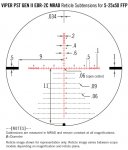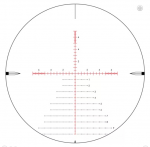Hi everyone, I'm brand new here. About 2 years ago I started shooting more regularly. I'm a type A person with a pretty extensive technical/mechanical background so anything precision and challenging appeals to me. So I'm looking to learn.
Anyway I was shooting my 223 Tikka Varmint at a local range at 100yds for 4 hours and then moved out to 200yds. At 200 I was using 2" florescent orange target stickers. I was having a hard time getting a sharp edge on the stickers and seeing my hits. Sometimes I could and sometimes I couldn't. It was like I was straining my eyes to focus on the target. My hundred yard target was stapled above it and I could see that clearer. Was the florescent orange messing with my head? Is expecting to see 22 caliber holes 200 yards away an unreasonable expectation?
The scope is a Nikon Prostaff 5 3.5-14x40 side focus. I tried adjusting both the side focus and ocular and never could get the reticle and orange target to stay in focus at the same time.
Ps please don't laugh at my targets.
Anyway I was shooting my 223 Tikka Varmint at a local range at 100yds for 4 hours and then moved out to 200yds. At 200 I was using 2" florescent orange target stickers. I was having a hard time getting a sharp edge on the stickers and seeing my hits. Sometimes I could and sometimes I couldn't. It was like I was straining my eyes to focus on the target. My hundred yard target was stapled above it and I could see that clearer. Was the florescent orange messing with my head? Is expecting to see 22 caliber holes 200 yards away an unreasonable expectation?
The scope is a Nikon Prostaff 5 3.5-14x40 side focus. I tried adjusting both the side focus and ocular and never could get the reticle and orange target to stay in focus at the same time.
Ps please don't laugh at my targets.






